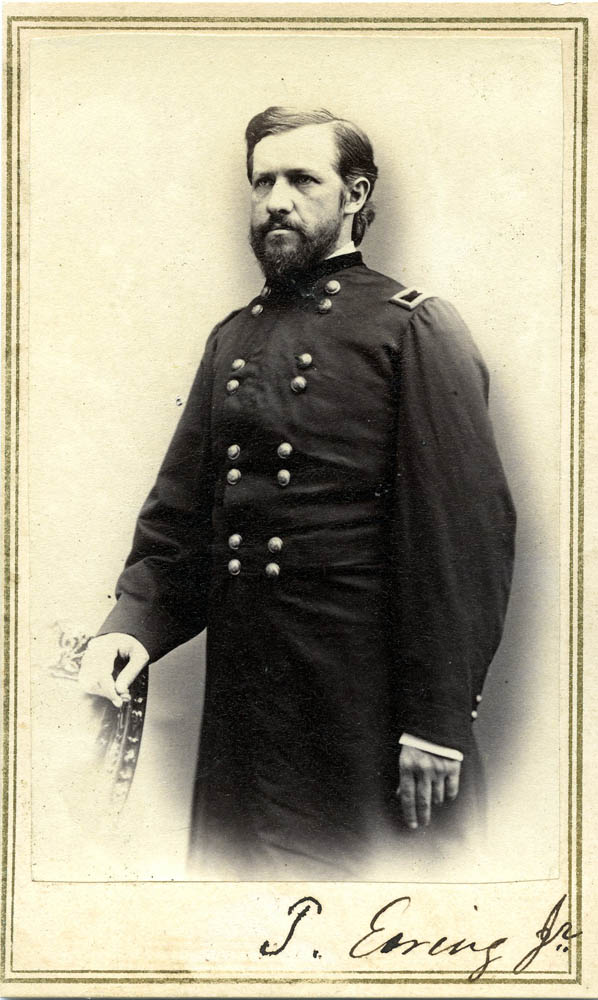Thomas Ewing Jr. was born on August 7, 1829, in Lancaster, Ohio; he was the foster brother of General William Tecumseh Sherman, who also became his brother-in-law when he married Ewing’s sister. Ewing studied and practiced law from 1852 through 1856 in Canton, Ohio; moving to Leavenworth, Kansas in 1856, he became a member of the Leavenworth Constitutional Convention of 1858. Being a moderate on the issue of slavery, his efforts to defeat the Lecompton Constitution helped Kansas enter the Union as a free state. In 1861 he was elected the first Chief Justice of the Kansas Supreme Court.
In 1862, Ewing recruited the 11th Kansas Cavalry and was elected its first colonel. In March 1863 he was promoted to brigadier general for his leadership at the Battle of Prairie Grove. In the wake of the Confederate attack on Lawrence, Kansas, Ewing issued Order No. 11 on August 25, 1863. Designed to deprive the guerrillas of their civilian base of support, the order forced pro-Southern civilians to evacuate four Missouri counties bordering the Kansas state line. Even civilians loyal to the Union had to relocate to designated military posts. Ewing’s order virtually depopulated these areas, and numerous homes were burned, causing a great deal of suffering without completely eliminating the guerrilla threat.
During Sterling Price’s 1864 raid through Missouri, Ewing commanded Fort Davidson near Pilot Knob. His successful defense of the fort and the safe withdrawal of Ewing and the garrison frustrated Price and inflicted many casualties on the Confederate army.
After the war, Ewing practiced law in Washington, D. C. from 1865-1870, where he represented three defendants in the Lincoln conspiracy trials; his efforts kept them from the gallows. Returning to Lancaster, Ohio, to practice law in 1870, Ewing was elected to Congress and served from 1877-1881. Moving to New York City in 1881, he continued his legal career until his death in 1896.
Carte-de-Visite by Unknown Photographer.
Image Courtesy Wilson’s Creek National Battlefield; WICR 31448




